- BY Colin Yeo

Latest asylum stats show the Home Office failing on all fronts
Table of Contents
ToggleThe latest quarterly immigration statistics are out. I’m focussing here on what the figures reveal about the system, including the backlog, arrivals, resettlement, grant rate, modern slavery referrals, detention and removals.
Backlog
The asylum backlog has reached over 160,000 people: 160,919 awaiting an initial decision, or 166,261 in total once fresh asylum claims are counted as well. Unsurprisingly, therefore, the numbers on asylum support have also increased, to 110,171 individuals.
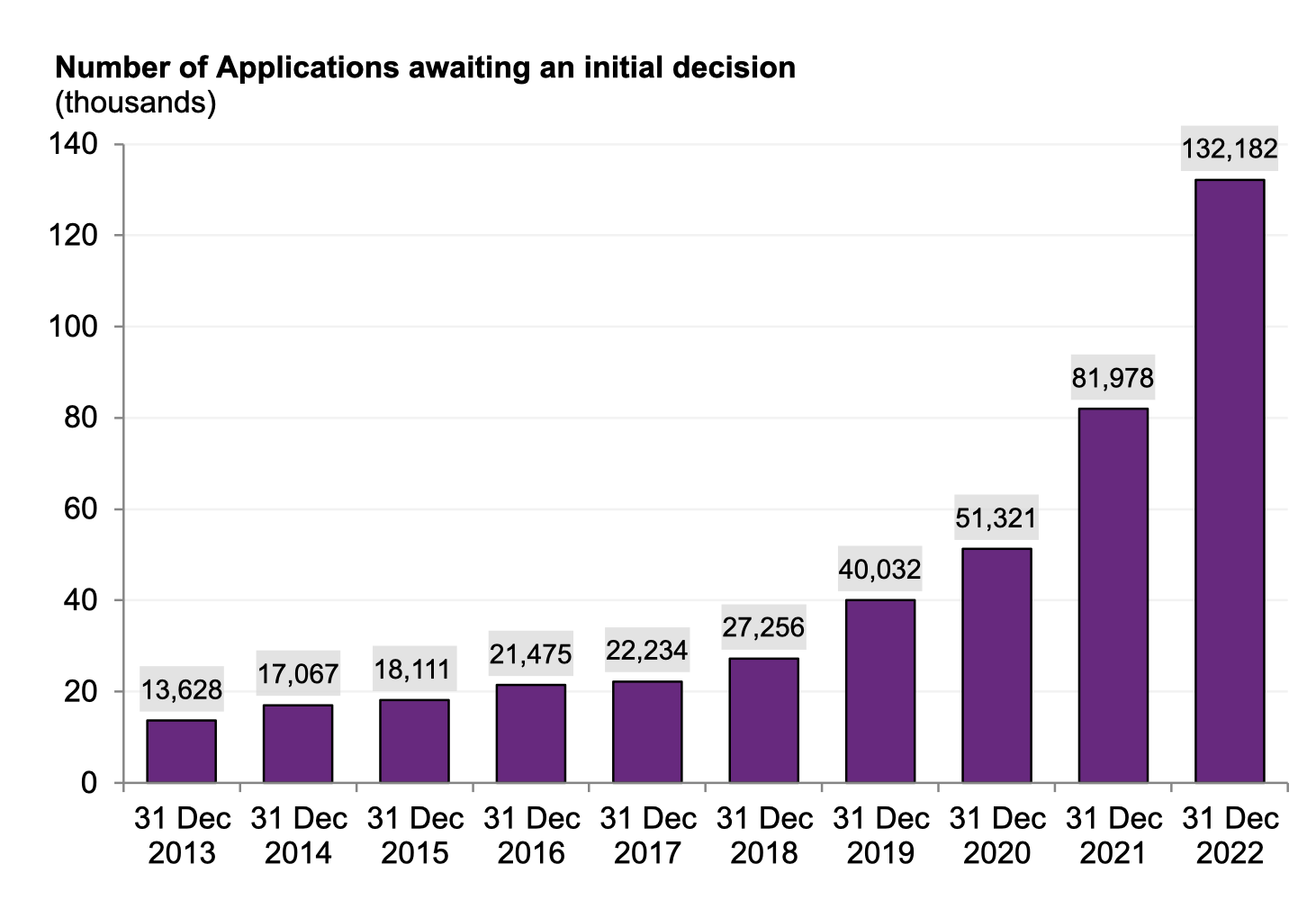
The reason for the backlog is twofold. Firstly, there was an increase in arrivals. Secondly, and more importantly, the Home Office only managed to make 18,999 decisions on asylum claims in the whole of 2022. There have been more asylum claims than that in every year since 2011, so it was inevitable that the backlog would rise. Rishi Sunak’s plan for asylum and his pledge to eliminate the backlog by the end of 2023 is in serious trouble.
One of the reasons for delays in decision making is the Home Office’s own ‘inadmissibility’ process. This involves arrivees having their claim put on hold while the Home Office attempts to remove them to a third country. In the absence of any agreements to remove to third countries other than Rwanda, and with Rwanda removals on ice while the courts consider their legality, this is entirely pointless. It merely absorbs valuable Home Office time. Between 1 January 2021 and 30 September 2022, 20,605 asylum claims were considered under the inadmissibility process. Of them, only 83 individuals were served with actual inadmissibility decisions. And of them, only 21 were removed.
Arrivals
There has also been an increase in the number of asylum claims. 89,398 people claimed asylum in 2022, once dependents are counted. That is not as many people as were claiming asylum back in the early 2000s but it is not far off. The chart below shows main applicants only.

It is worth remembering that the numbers claiming asylum remain far, far lower than in comparable EU countries. The UK is not a “magnet” for asylum seekers as some seem to think: the vast majority arriving in Europe claims asylum elsewhere.
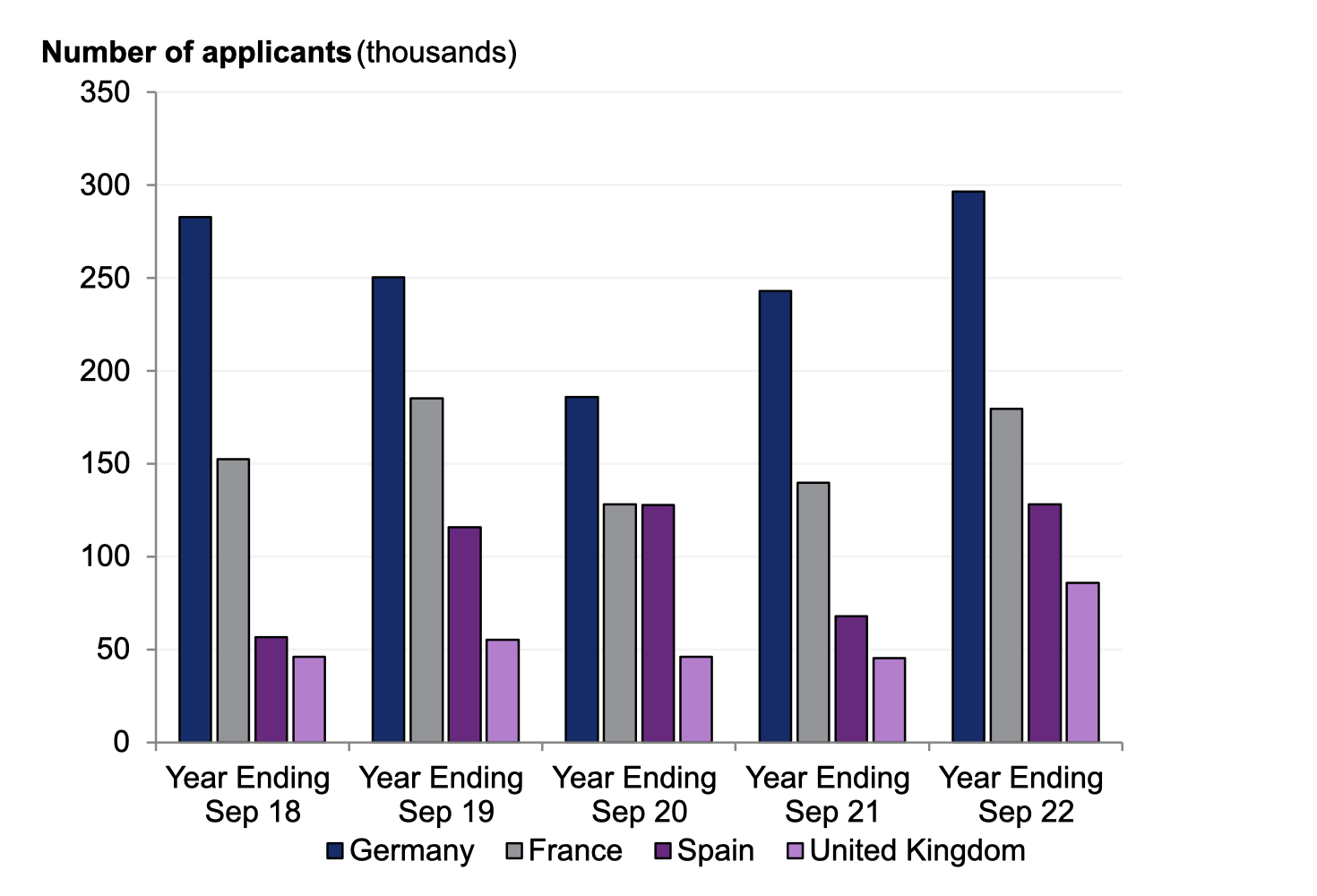
There are separate statistics and analysis published for ‘irregular migration’. This shows that around half of those arriving to claim asylum did so in a small boat: 45,755 people. That is an increase on the number arriving in small boats in 2021, but the rate of increase has slowed a little.
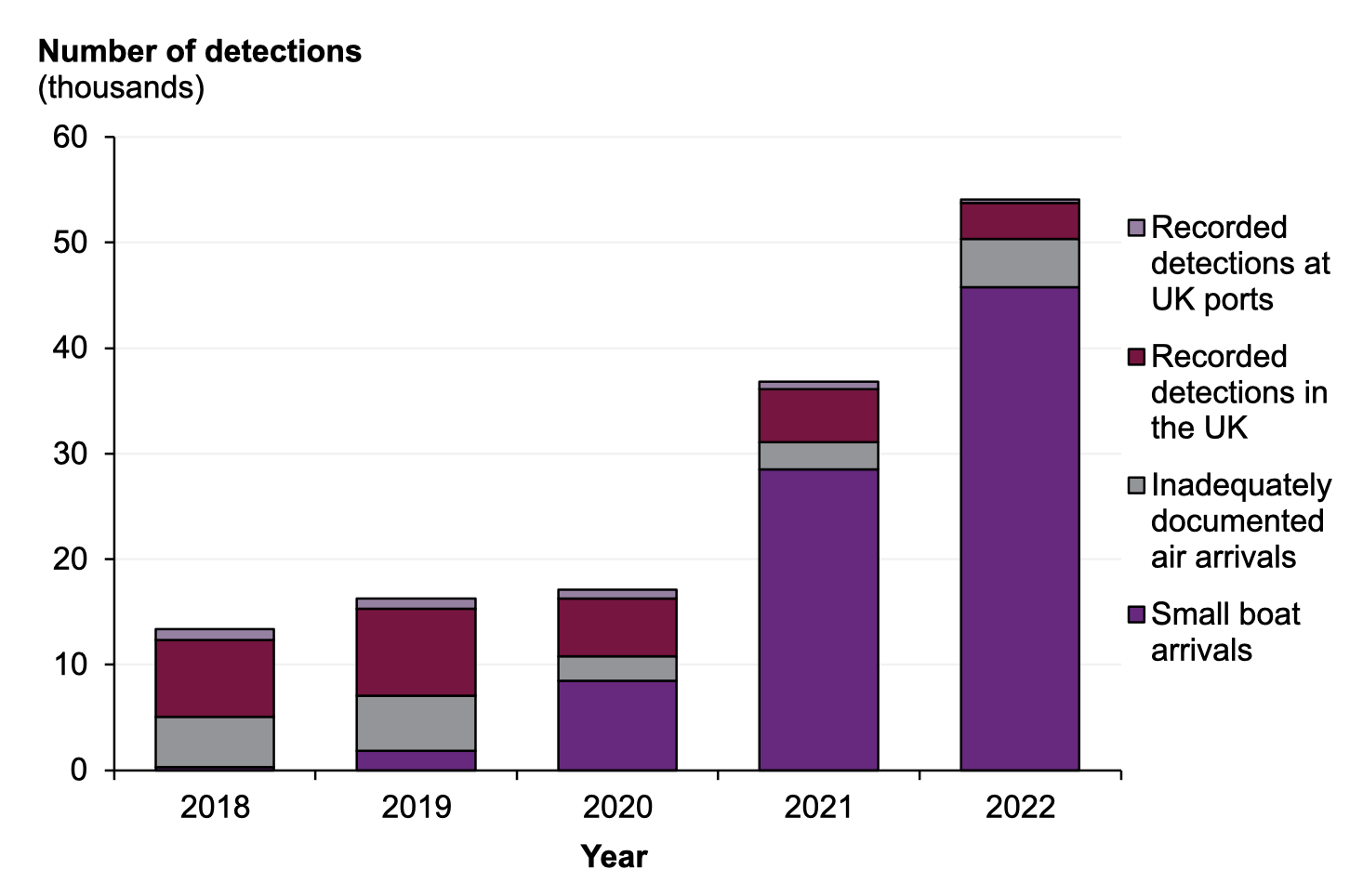
The composition of those arriving by small boat also changed. There was a sharp and significant increase in the number of Albanians arriving, from 815 in 2021 to 12,301 arrivals in 2022. The number of Afghans traveling by small boat has also increased significantly, from 1,437 in 2021 to 8,633 in 2022. The chart below, which shows small boat arrivals only, represents percentage composition rather than absolute numbers but still gives you an idea of what has happened.
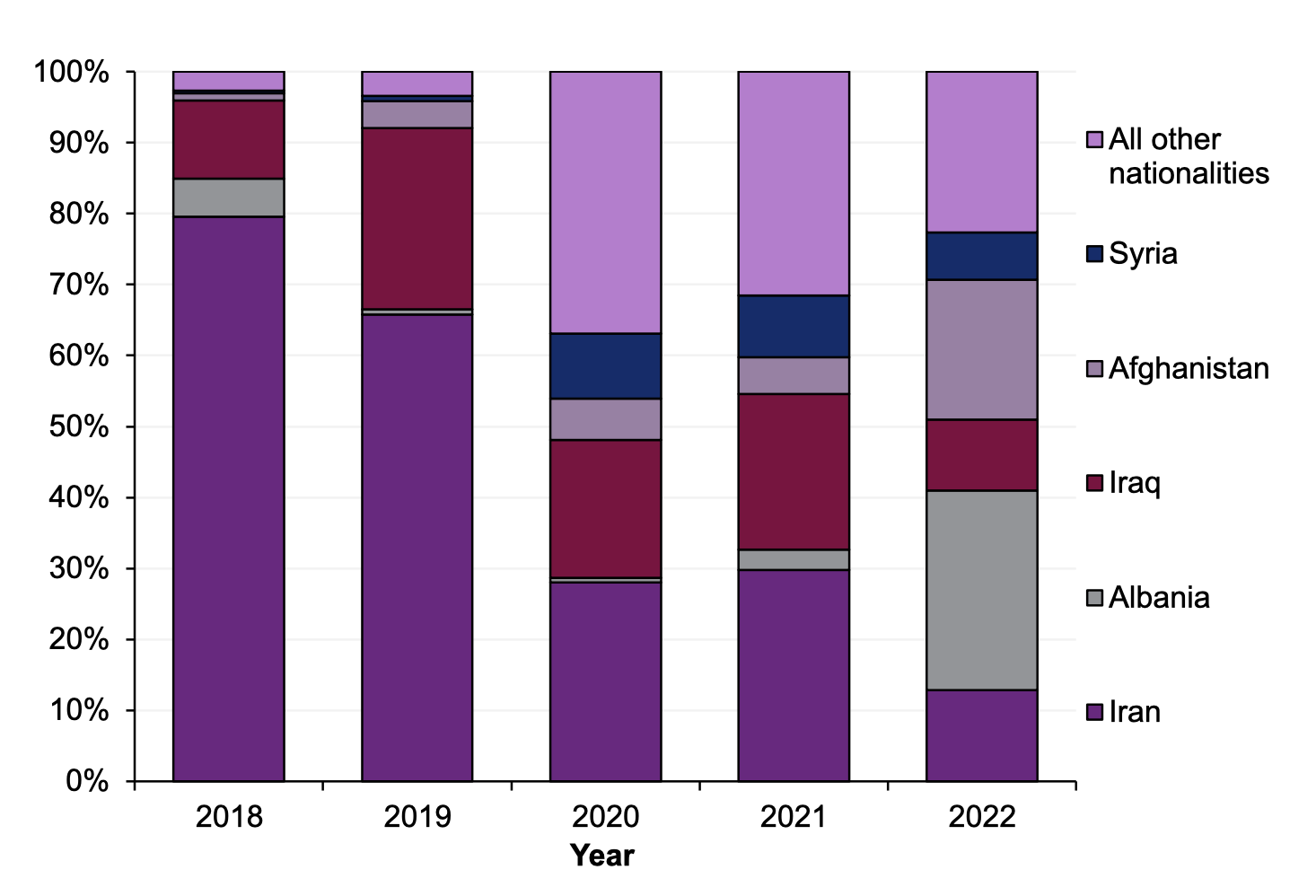
90% of those who arrive in a small boat claim asylum. But they still make up less than half of the total number of asylum claims. Only 340 decisions were made on claims by small boat arrives in 2022, 62% of which were positive. That’s a small sample, though, so it would be unwise to extrapolate that figure to small boat arrivals overall.
Refugee resettlement
Aside from Ukrainians, a total of 5,792 refugees were resettled to the UK in 2022, which is comparable to pre-pandemic levels. This is welcome. What is surprising, though, is the tiny number of Afghans this includes. Just 22 Afghans were resettled under the post-evacuation scheme, called Pathway 2. A further 38 Afghans were resettled under unspecified schemes of some sort. Meanwhile, as we’ve seen, the number of Afghans arriving by small boat has increased significantly.
A further 4,473 refugee family members were granted entry under the Immigration Rules, but this represents a sharp decline on pre-pandemic levels.
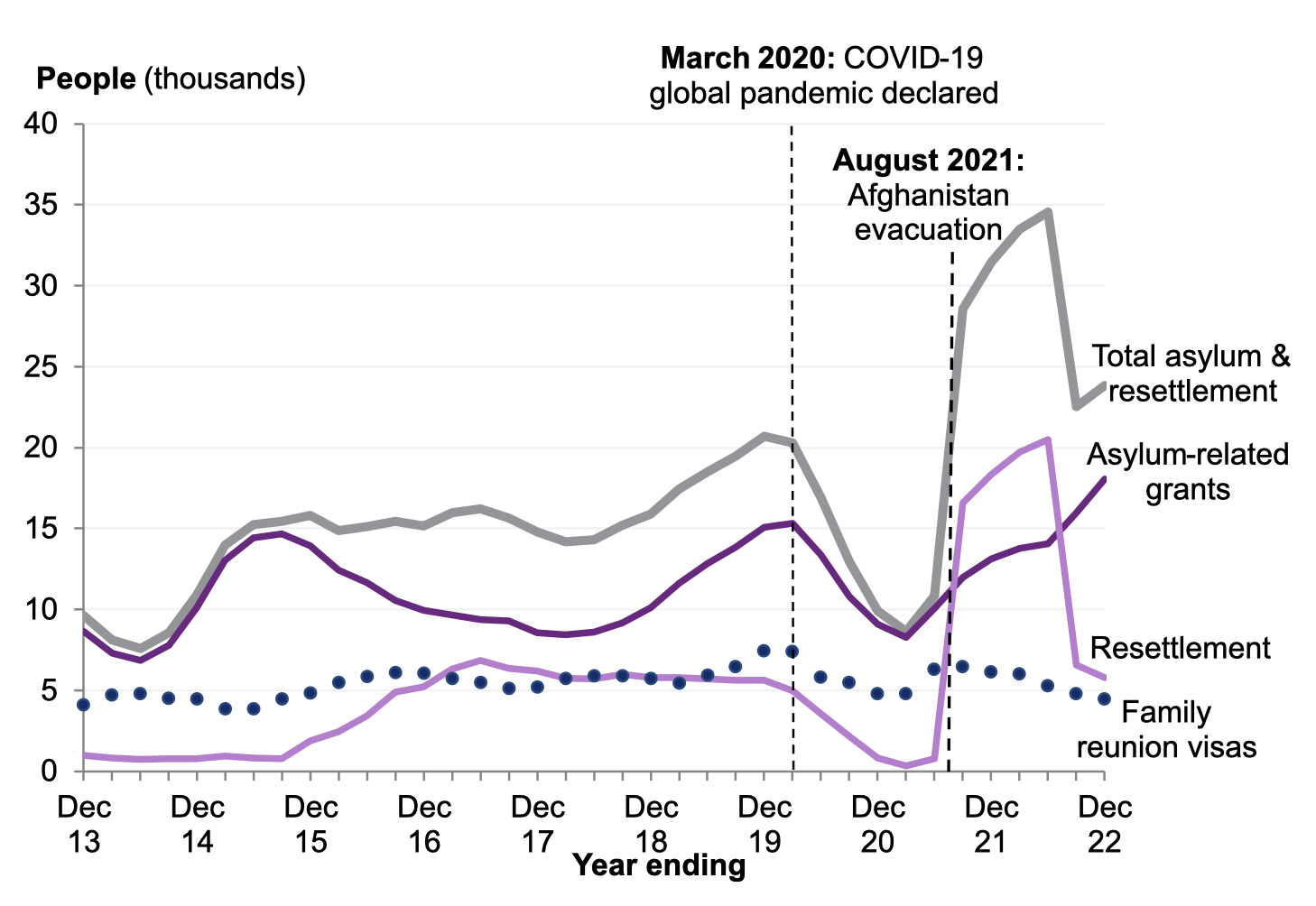
The bulge in refugee resettlement on the chart above for 2020-21 represents the Afghan evacuation prior to and during the western withdrawal and Taliban takeover.
Modern slavery and trafficking
We’ve heard a lot about how mechanisms to protect against modern slavery are supposedly being exploited and preventing removals. We’ll look at removals in a moment.
The reality is that only a small number of those that arrive by small boat are referred for protection from trafficking. In 2022, just 2,691, or 6% of small boat arrivees, were referred by the Home Office into the National Referral Mechanism, the trafficking protection scheme. And then 85% of initial assessments of whether the person was a trafficking victim were positive. These assessments are conducted by the Home Office, remember. There is a backlog for assessment, but the Home Office was more or less keeping pace with referrals even if not making inroads into the backlog: there were 2,691 referrals and 2,150 initial decisions. There were only 103 conclusive, final decisions, however, so there is a significant backlog building up there.
In 2022, 55% of all referrals for trafficking protection involved Albanians. But only 12% of Albanians were referred.
Asylum outcomes
The grant rate for asylum claims continues to be very high. But the number of decisions was rather small so it is not clear that the grant rate is representative. In total, the Home Office only managed to make 18,699 decisions in the whole of 2022. This is why the backlog continues to increase.
76% of initial decisions were grants of asylum. Of those who were refused and went on to lodge an appeal, a further 51% had their asylum appeals allowed. The vast majority of people arriving in the UK are genuine refugees according to the internationally accepted Refugee Convention definition.
There is considerable variation in the grant rate by nationality, though, as shown in this Home Office chart showing the top ten nationalities claiming asylum:

Detention
Use of detention both declined and also changed in 2022. We can see that overall the number of people experiencing immigration detention fell:
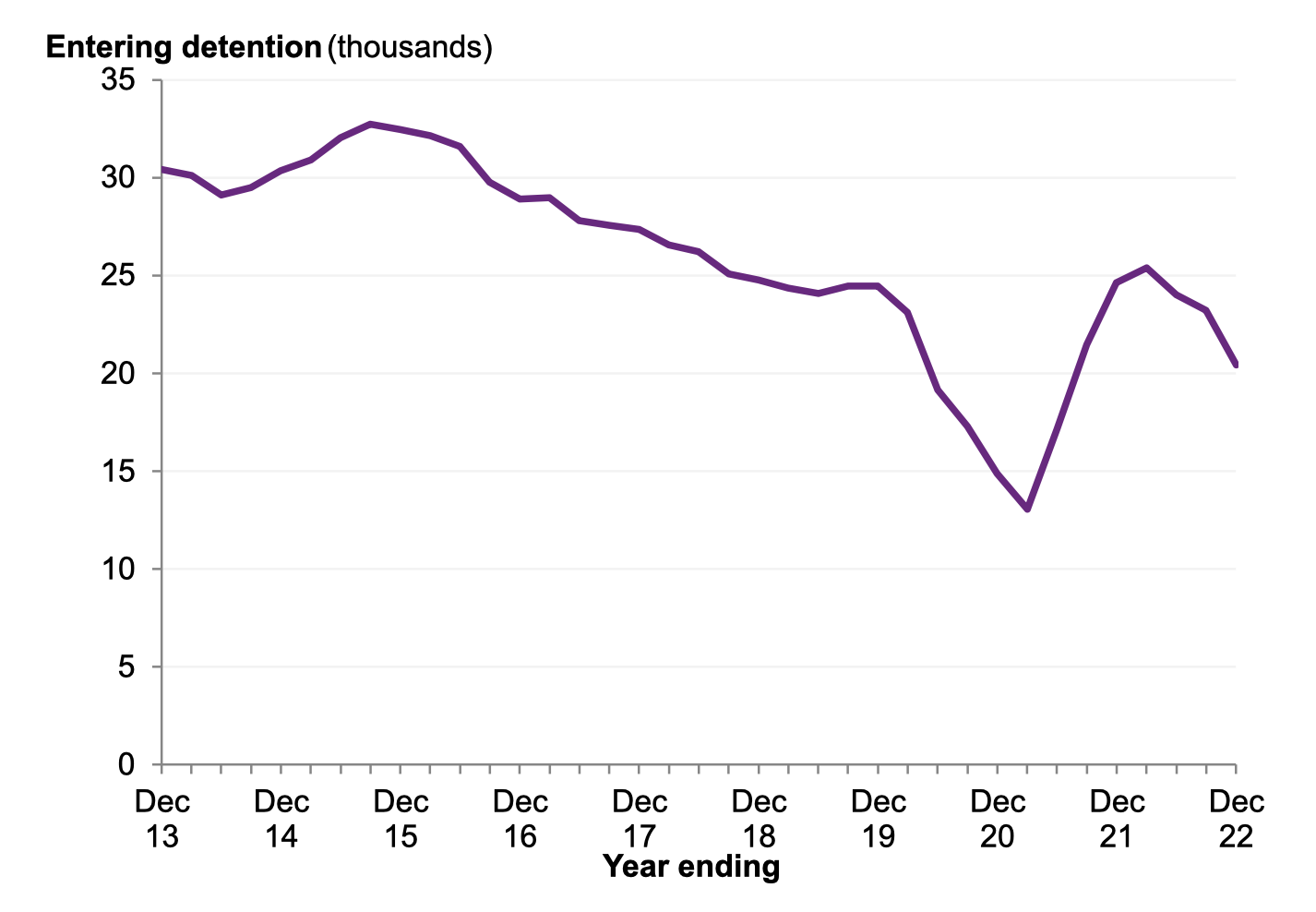
How does this marry with the reports of mass detention of those arriving by small boats at Manston and elsewhere? Well, the use of detention also changed. Normally, detention is associated with enforced removals. Instead, the Home Office was detaining asylum seekers on arrival for fairly short periods of time (although still unnecessarily long of course). The following chart represents percentages – the overall numbers did decline, remember:
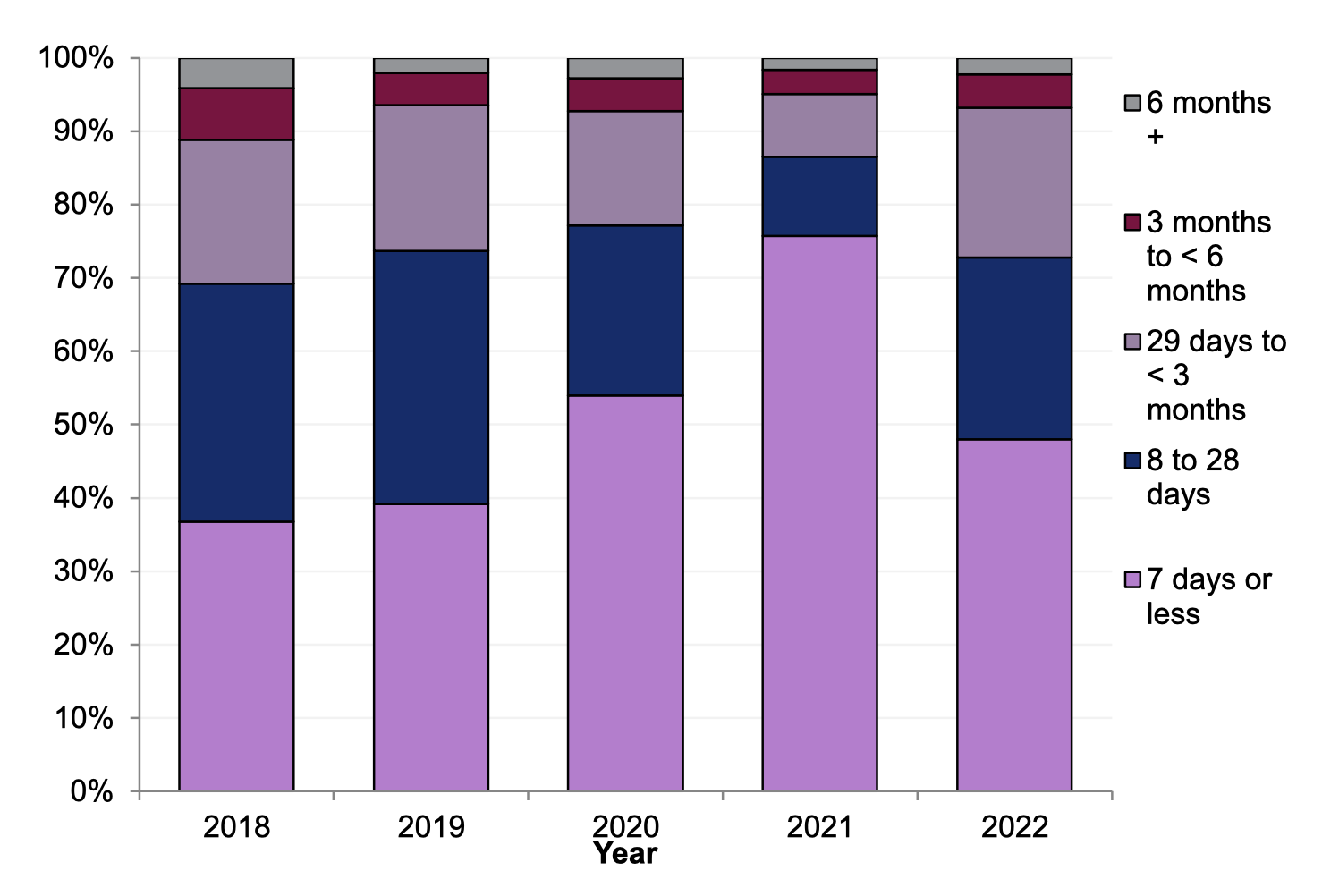
What I find surprising about this is the decrease in detention for seven days or less and concomitant increase in detention for longer periods. If the Home Office was doing a “good” job (on its own terms) of detaining asylum seekers on initial arrival for identification then this would be for a very short period. That is not what is happening.
Removals and voluntary departures
Enforced removals and voluntary departures remain at very low levels, particularly for asylum seekers. The following chart shows the overall low levels but this includes removals and departures for foreign offenders and others.
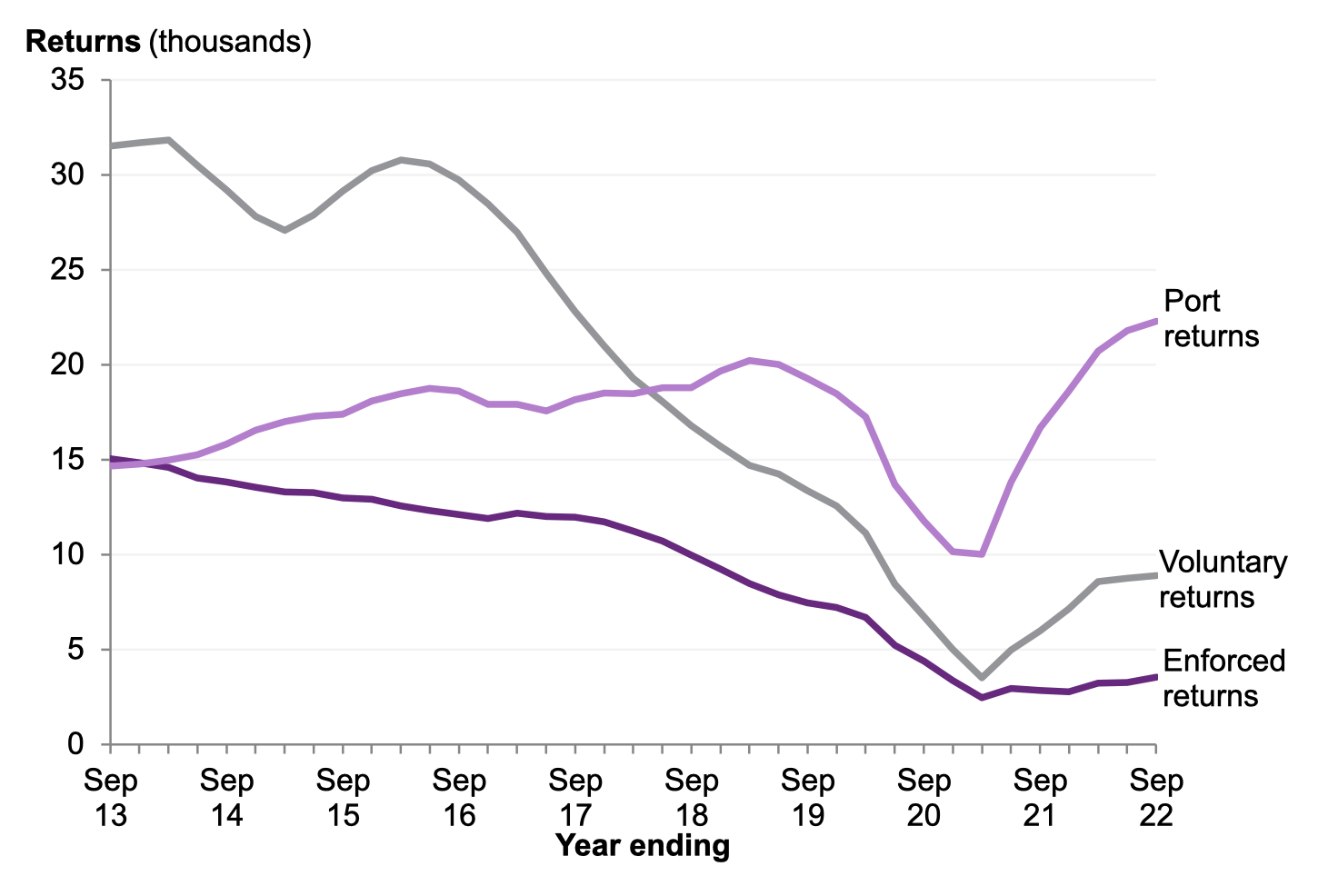
It is only when we dig into the data tables we can see what is happening with asylum seekers whose asylum claims have failed. In the year ended September 2022, a total of 489 asylum seekers were removed from the UK. A further 1,601 made voluntary departures.
On any measure, the Home Office is abysmally failing at everything it tries to do with the asylum system.
SHARE


One Response
Extremely useful article, thank you. With your permission , I’d like to share this with some of our Eastbourne Networx members who support asylum seekers in our community .
It clarifies the situation very well and corrects so many of the comments repeated daily by the media.